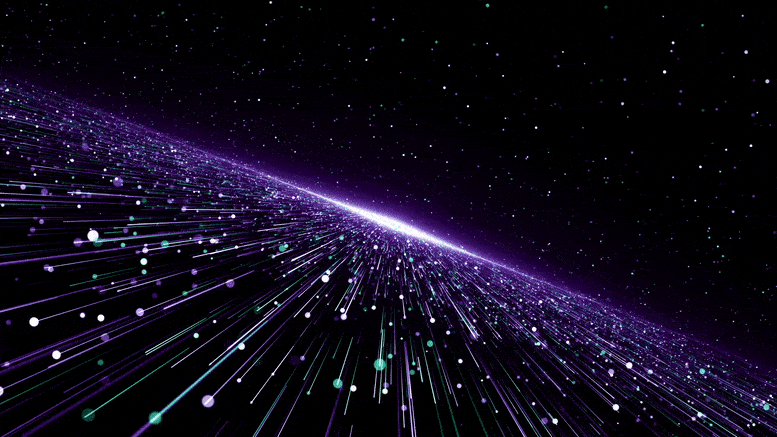According to the Lambda-cold dark matter (Lambda-CDM) model, which is the generally accepted standard for how the Universe arose and developed, ordinary matter that we encounter daily is only about 5% of the Universe, dark matter is 27%, and the remaining 68% is dark energy, so far a theoretical force driving the expansion of the Universe.

But a new study has called into question whether dark energy exists at all. Recent results of computer simulations have shown that dark energy is an illusion.
Problem of Einstein’s theory of relativity
Einstein’s general theory of relativity, published in 1915, is the basis of the generally accepted history of the origin of the Universe, according to which the Big Bang gave rise to the expansion of the Universe about 13.8 billion years ago. The problem is that the equations it uses are incredibly complex, so physicists tend to simplify parts of them to make them more practical to work with. When models are built on the basis of these simplified versions, small gaps can turn into huge discrepancies.
“Einstein’s equations of general relativity that describe the expansion of the universe are so complex mathematically, that for a hundred years no solutions accounting for the effect of cosmic structures have been found, we know from very precise supernova observations that the universe is accelerating, but at the same time we rely on coarse approximations to Einstein’s equations which may introduce serious side effects, such as the need for dark energy, in the models designed to fit the observational data,” says Dr László Dobos in his article.
Mysterious force that no one has seen
Dark energy has never been directly observed. It can be studied only through its influence on other objects. Its properties and existence are still purely theoretical, which makes it a fallback option for plugging holes in modern cosmological models.
The mysterious force was first put forward as the driving force behind the accelerated expansion of the Universe in the 1990s, based on observations of type Ia supernovae. These bright spots, which are sometimes called “standard candles”, shine with a constant peak brightness. By measuring the brightness of their light, it is possible to determine how far away an object is.

This research played an important role in spreading the idea that dark energy accelerates the expansion of the Universe. This discovery earned scientists the Nobel Prize in Physics in 2011. But other studies question the validity of this conclusion. Some researchers are trying to develop a more accurate picture of the cosmos with software that can better deal with all the wrinkles of general relativity.
Avera model
According to a new study by Eötvös Loránd University in Hungary and the University of Hawaii, the discrepancy that dark energy was “invented” to fill could have arisen due to those parts of the theory that were left out to simplify. Researchers have created a computer simulation of how the Universe formed, based on its large-scale structure. This structure obviously has the shape of foam, where galaxies are located on the thin walls of each bubble, but the large pockets in the middle are mostly devoid of both normal and dark matter.
The team modeled how gravity would affect matter in this structure, and found that instead of the Universe expanding smoothly and evenly, different parts of it would expand at different speeds. It is important, however, that the overall average expansion rate is still consistent with observations and indicates an acceleration of expansion. The end result is what the team calls the Avera model.
“The theory of general relativity is fundamental in understanding the way the universe evolves, we do not question its validity; we question the validity of the approximate solutions. Our findings rely on a mathematical conjecture which permits the differential expansion of space, consistent with general relativity, and they show how the formation of complex structures of matter affects the expansion. These issues were previously swept under the rug but taking them into account can explain the acceleration without the need for dark energy,” explains Dobos.
If the study stands up to scrutiny, it may change the direction of the study of physics, abandoning the pursuit of the ghost of dark energy.
Earlier we reported on how the new theory revealed the future of the Universe and its end.
According to Space Academy
Follow us on Twitter to get the most interesting space news in time
https://twitter.com/ust_magazine
